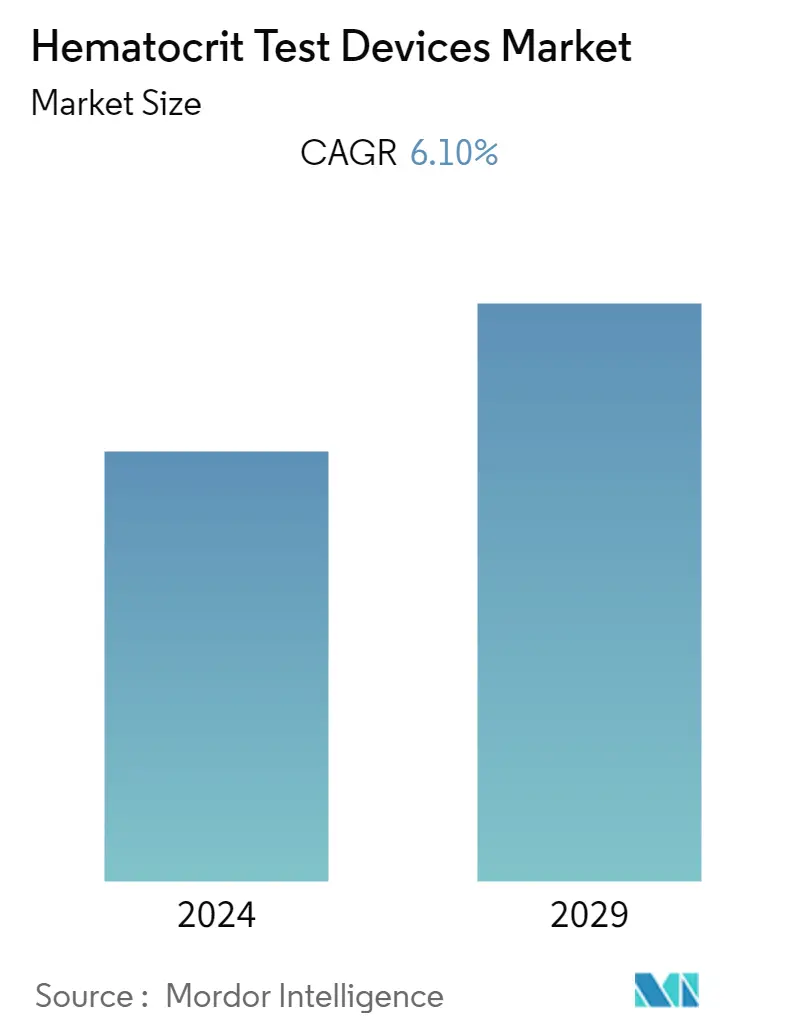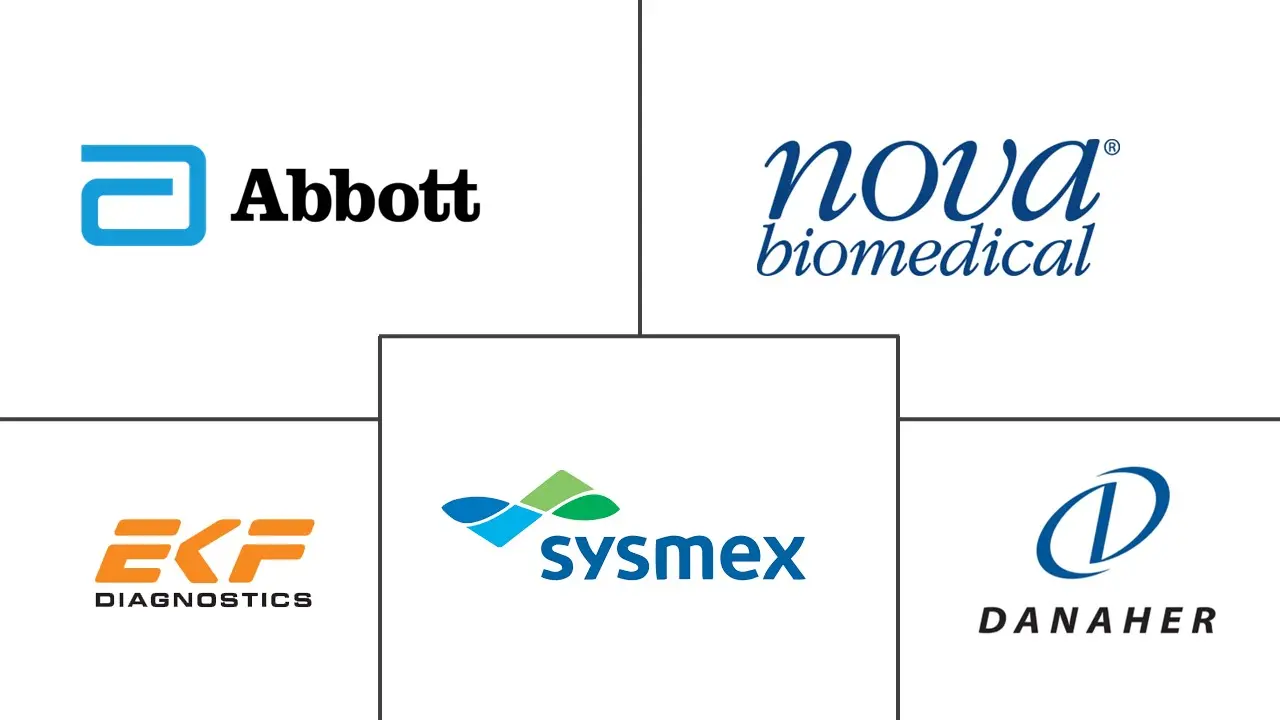Market Size of Hematocrit Test Devices Industry

| Study Period | 2019 - 2029 |
| Base Year For Estimation | 2023 |
| CAGR | 6.10 % |
| Fastest Growing Market | Asia-Pacific |
| Largest Market | North America |
| Market Concentration | Medium |
Major Players
*Disclaimer: Major Players sorted in no particular order |
Need a report that reflects how COVID-19 has impacted this market and its growth?
Hematocrit Test Devices Market Analysis
The hematocrit test devices market is expected to register a CAGR of 6.1% over the forecast period.
The COVID-19 pandemic had a significant impact on the hematocrit test devices market. The blood test used increased during the pandemic to diagnose COVID-19 patients. For instance, according to a study published in the MDPI Journal in November 2021, the clinical course of COVID-19 individuals admitted with mild disease can be tracked using regular hematology tests. Additionally, as per the study published in the NCBI in February 2022, patients with severe COVID-19 showed an increase in hematological changes, indicating a progressive worsening as COVID-19 severity progressed. Hence, it proposed that monitored hematological alterations in patients with COVID-19 played an important role in managing the disease and preventing the risk of a severe course of the disease. Thus, hematocrit testing was increasingly used to identify the physiological alterations in the blood component of COVID-19 patients during COVID-19 and led to significant growth.
The high prevalence of anemia and other blood disorders worldwide is expected to be a major driving factor for the growth of hematocrit test devices. Iron deficiency anemia is a common health problem that affects children under the age of five. For instance, according to a research study published in NCBI in July 2022, the global pooled prevalence (till 2021) of iron deficiency anemia and iron deficiency in children was 16.42% and 17.95%, respectively. Iron deficiency and anemia are very common, especially in Asia and Africa. Therefore, to reduce their complications, regular screening and treatment of iron deficiency and iron deficiency anemia are required, especially in high-risk children. Thus, the significant burden of anemia globally is expected to spur the demand for hematocrit test devices, thereby boosting the market.
The increasing geriatric population is further expected to augment the demand for hematocrit tests as they are more prone to chronic diseases and often require routine checkups. According to the United Nations World Population Prospects 2022, the share of the global population aged 65 years or above is projected to rise from 10% in 2022 to 16% by 2050. It is also estimated that, by 2050, the number of persons aged 65 years or over worldwide is projected to be more than twice the number of children under age five and about the same as the number of children under age 12. Thus, the increasing geriatric population worldwide is likely to create demand for blood tests, ultimately contributing to the market's growth.
However, stringent regulations regarding test devices and less awareness about the hematocrit test are expected to restrain the growth of the market during the forecast period.
